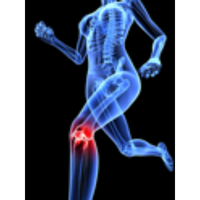This guest post comes from Jaime Bellamy, DO in response to a recent randomized clinical trial reported in JAMA Network Open and featured in MedPage Today.
I work in a military system, which is about as inefficient as it gets in the medical world. But I work to find ways to make it efficient and effective for my patients, including the use of “prehabilitation,” physical therapy (PT) offered to patients before procedures such as total knee arthroplasty (TKA). My aims are to provide the patient with an early introduction to PT in a relatively low-stress environment, to help them understand the potential challenges of the rehabilitation process, and to offer an understanding of the patient’s home situation to the physical therapist. It is also useful for the patient’s partner to attend in order to be able to assist them at home. This touch point for my patients helps to establish a relationship with the physical therapist, ease anxiety, and ultimately improve their outcomes. But what I believed has benefitted my patients in their recovery after TKA is now in question.
As reported in the March 9, 2022 issue of JAMA Network Open, Nguyen et al. investigated the effect of multidisciplinary prehabilitation before TKA for osteoarthritis with respect to functional outcomes. They randomized 262 patients from 3 tertiary centers in France to either prehabilitation (experimental group) or usual care (control group). The experimental group had 4 supervised sessions of education (30 minutes) and exercise therapy (60 minutes) at least 2 months prior to TKA, while the control group received an information booklet and standard advice by the orthopaedic surgeon. The main outcomes were the percentage of patients who achieved functional independence at a mean of 4 days postoperatively, and activity limitations within 6 months after TKA as assessed by the area under the receiver operating characteristic curve (AUC) for WOMAC scores. Secondary outcomes were pain, quality of life, level of physical activity, and costs.
In terms of functional independence 4 days after surgery, no difference between the two groups was found, with 34% in the experimental vs. 27% in the control group achieving functional independence. Similarly, there was no difference in WOMAC function at 6 months (mean AUC of 38.1 mm2 in the experimental vs. 40.6 mm2 in the control group).
But I accept these results with caution. Unfortunately, only one-third of the patients in the experimental group attended all of the sessions, which severely limits the study results. The authors admit that their prehabilitation program may have been too burdensome for compliance and a “simplified, home-based rehabilitation education program” may be more acceptable. No differences in the secondary end points were demonstrated.
Instead of answering a question, this study made me wonder: does prehabilitation before TKA help or not? After contemplating this well-intentioned study with robust data, I still do not know. What I do know is that patients in my practice have benefited from prehabilitation, anecdotally anyway. Maybe the benefit is less in measurable outcomes and more in something gained mentally through “peace of mind,” which may not be measurable but cannot be disregarded either.
Jaime Bellamy, DO is an adult reconstruction surgeon at Womack Army Medical Center, Ft. Bragg, North Carolina, and a member of the JBJS Social Media Advisory Board.



